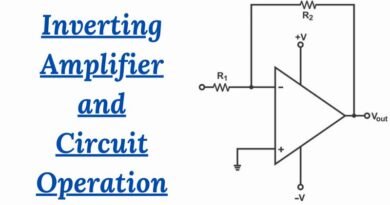FPGA vs. ASIC Explained: Key Features, Use Cases and Advantages
In the semiconductor world, two powerful technologies—Field Programmable Gate Arrays (FPGAs) and Application-Specific Integrated Circuits (ASICs)—stand out for their unique advantages and purposes. These technologies are integral to modern electronics, enabling a wide range of applications from consumer gadgets to complex industrial systems.
FPGAs and ASICs are often compared because they offer solutions for similar problems, yet their approaches are fundamentally different. While FPGAs are versatile and programmable, allowing designers to adapt and refine their functions even after deployment, ASICs are tailored for specific tasks, delivering unmatched efficiency and performance in high-volume applications. This article delves into their key features, differences, and typical applications to help readers understand when to use each technology.
What is FPGA?
Field Programmable Gate Arrays (FPGAs) are integrated circuits designed to be programmed by the user after manufacturing. Unlike traditional chips with fixed functions, FPGAs offer a flexible platform where designers can configure the hardware to perform specific operations. This flexibility makes FPGAs ideal for a wide range of applications, from prototyping to deployment in dynamic systems.
Key Features of FPGA
- Programmability:
FPGAs are reconfigurable, meaning their functionality can be altered multiple times during the design and testing phases or even in the field. This makes them ideal for iterative development processes. - High Flexibility:
Their ability to implement various digital designs without the need for a new chip allows for quick adaptations to changing requirements or standards. - Suitable for Prototyping and Testing:
FPGAs are widely used in product development because they can emulate the behavior of an ASIC during the design stage, saving time and cost before committing to mass production.
Typical Applications of FPGAs
- Prototyping and proof of concept for digital circuits.
- Real-time signal processing in telecommunications and multimedia.
- Control systems in aerospace and defense.
- Hardware acceleration in AI and machine learning applications.
- Systems requiring frequent updates or reconfigurations, such as industrial automation.
What is ASIC?
Application-Specific Integrated Circuits (ASICs) are custom-designed chips tailored to perform a particular function or set of functions. Unlike FPGAs, ASICs are manufactured with fixed hardware, meaning their functionality is locked at the time of fabrication. This specificity allows for optimized performance, lower power consumption, and reduced size.
Key Features of ASIC
- Designed for Specific Tasks:
ASICs are created for dedicated functions, such as powering a smartphone processor or managing data encryption in secure communications. This specialization allows for unmatched performance in targeted applications. - High Performance and Efficiency:
Because ASICs are optimized for a specific task, they consume less power, operate faster, and occupy less space compared to general-purpose chips like FPGAs. - High Initial Development Cost but Lower Per-Unit Cost in High Volumes:
Developing an ASIC involves a significant upfront investment due to design, testing, and fabrication costs. However, in high-volume production, the cost per chip drops significantly, making ASICs economically viable for large-scale manufacturing.
Typical Applications of ASICs
- Microprocessors for smartphones and consumer electronics.
- Networking devices like routers and switches.
- Cryptographic devices for secure communications.
- Sensors and controllers in automotive applications.
- Application-specific devices in healthcare, such as imaging and monitoring equipment.
Key Differences between FPGA and ASIC
Architecture and Design
FPGAs are known for their reprogrammable architecture, allowing designers to configure and modify the functionality of the hardware after manufacturing. This reprogrammability makes FPGAs ideal for iterative design processes, prototyping, and applications where flexibility is critical.
In contrast, ASICs are custom-designed for specific tasks. Once fabricated, their functionality is fixed and cannot be altered. This fixed nature ensures optimal performance and efficiency for the intended application but sacrifices adaptability for future changes or updates.
Cost
- Development Costs:
FPGA development requires minimal upfront investment as they do not need custom manufacturing. Designers can use off-the-shelf FPGA chips and standard development tools. Conversely, ASICs demand a significant initial investment due to custom chip design, simulation, and fabrication processes. - Unit Costs:
FPGAs are more expensive per unit due to their general-purpose architecture and lower production volumes. ASICs, however, become cost-effective in large volumes, as the per-unit cost decreases significantly once the design is finalized. - Cost-Effectiveness:
FPGAs are suitable for low-volume or one-off projects where the high development cost of ASICs cannot be justified. ASICs excel in high-volume applications where their fixed cost is amortized over thousands or millions of units.
Performance
ASICs are designed to perform specific tasks with maximum efficiency. This results in higher speed, lower power consumption, and reduced chip size compared to FPGAs. Since FPGA designs use programmable logic, they are generally slower and consume more power due to their flexible but generalized architecture.
While modern FPGAs offer competitive performance for certain applications, ASICs remain the preferred choice for tasks requiring the highest levels of optimization.
Flexibility
FPGAs are inherently flexible, allowing for reprogramming even after deployment. This makes them an excellent choice for applications requiring frequent updates, iterative testing, or changing standards. ASICs, on the other hand, lack this flexibility. Their functionality is hardwired during fabrication, making them less adaptable but more efficient for static tasks.
Time to Market
FPGAs offer a significant advantage in terms of time to market. Their off-the-shelf availability and ease of programming allow developers to deploy solutions quickly. ASICs, with their lengthy design, simulation, and fabrication cycles, require much more time before they can be deployed, often spanning several months or more.
FPGAs are thus favored for projects with tight deadlines or evolving requirements, while ASICs suit applications with a long-term, stable roadmap.
Scalability
For large-scale production, ASICs are more scalable. Their fixed per-unit cost becomes highly economical in high volumes, making them ideal for consumer electronics and other mass-market products. FPGAs, due to their higher per-unit costs, are better suited for low-volume production or projects where flexibility outweighs scalability concerns.
When to Use FPGA?
Scenarios Where FPGAs are More Advantageous
- Rapid Prototyping: FPGAs are perfect for testing and validating circuit designs before committing to ASIC production. Their reprogrammable nature allows for quick iterations and refinements.
- Low-Volume Production: In projects where only a few units are required, such as in industrial automation or aerospace, FPGAs are more cost-effective than ASICs.
- Dynamic Applications: Systems requiring frequent updates, such as telecom infrastructure or real-time data processing systems, benefit from the programmability of FPGAs.
- Short Time-to-Market Needs: For projects with tight deadlines, FPGAs can be deployed faster, reducing development cycles and enabling quicker testing or market release.
Examples of Industries and Projects
- Telecommunications: Signal processing, data encryption, and 5G testing platforms.
- Aerospace and Defense: Radar systems, satellite communications, and secure data links.
- Artificial Intelligence: Hardware acceleration for machine learning algorithms.
- Industrial Automation: Real-time control systems for manufacturing and robotics.
- Consumer Electronics Prototyping: Early-stage development of devices like wearables or IoT gadgets.
When to Use ASIC?
Scenarios Where ASICs Are the Better Choice
- High-Volume Production: ASICs are the most cost-effective choice for products manufactured in large quantities, as their high initial development cost is amortized over the production volume.
- Performance-Critical Applications: When performance metrics like speed, power efficiency, and thermal management are critical, ASICs provide optimized solutions tailored to specific tasks.
- Size-Constrained Designs: ASICs can be designed with minimal physical footprint, making them ideal for compact devices like smartphones, wearable gadgets, and medical implants.
- Long-Term Stable Applications: For products with well-defined and unchanging requirements, such as network infrastructure hardware or automotive control systems, ASICs ensure reliability and efficiency.
- Custom and Proprietary Solutions: ASICs are indispensable for creating proprietary hardware that delivers a competitive edge, ensuring unique functionality that cannot be easily replicated.
Examples of Industries and Projects
- Consumer Electronics:
- Processors and GPUs for smartphones, tablets, and laptops.
- Custom chips for gaming consoles like PlayStation and Xbox.
- Automotive:
- Engine control units (ECUs).
- Autonomous driving systems and LiDAR integration.
- Networking and Telecommunications:
- Routers, switches, and data center processors.
- ASICs for high-speed data transmission and packet processing.
- Healthcare:
- Imaging devices like MRI and CT scanners.
- Wearable health monitors with custom chips.
- Cryptography and Blockchain:
- ASIC miners for cryptocurrency processing.
- Secure encryption processors for financial institutions.
Conclusion
In conclusion, FPGAs and ASICs each have unique strengths, making them suitable for different use cases in the semiconductor and electronics industries. FPGAs excel in flexibility, quick deployment, and dynamic reprogramming, making them invaluable for prototyping, low-volume production, and applications requiring adaptability. On the other hand, ASICs dominate in performance, efficiency, and cost-effectiveness for high-volume production and long-term, stable applications.
The choice between FPGA and ASIC ultimately depends on factors such as project scope, budget, performance requirements, and production volume. For projects with evolving requirements or constrained timelines, FPGAs offer unmatched versatility. Meanwhile, ASICs provide the best return on investment for mass-market, performance-critical products.








